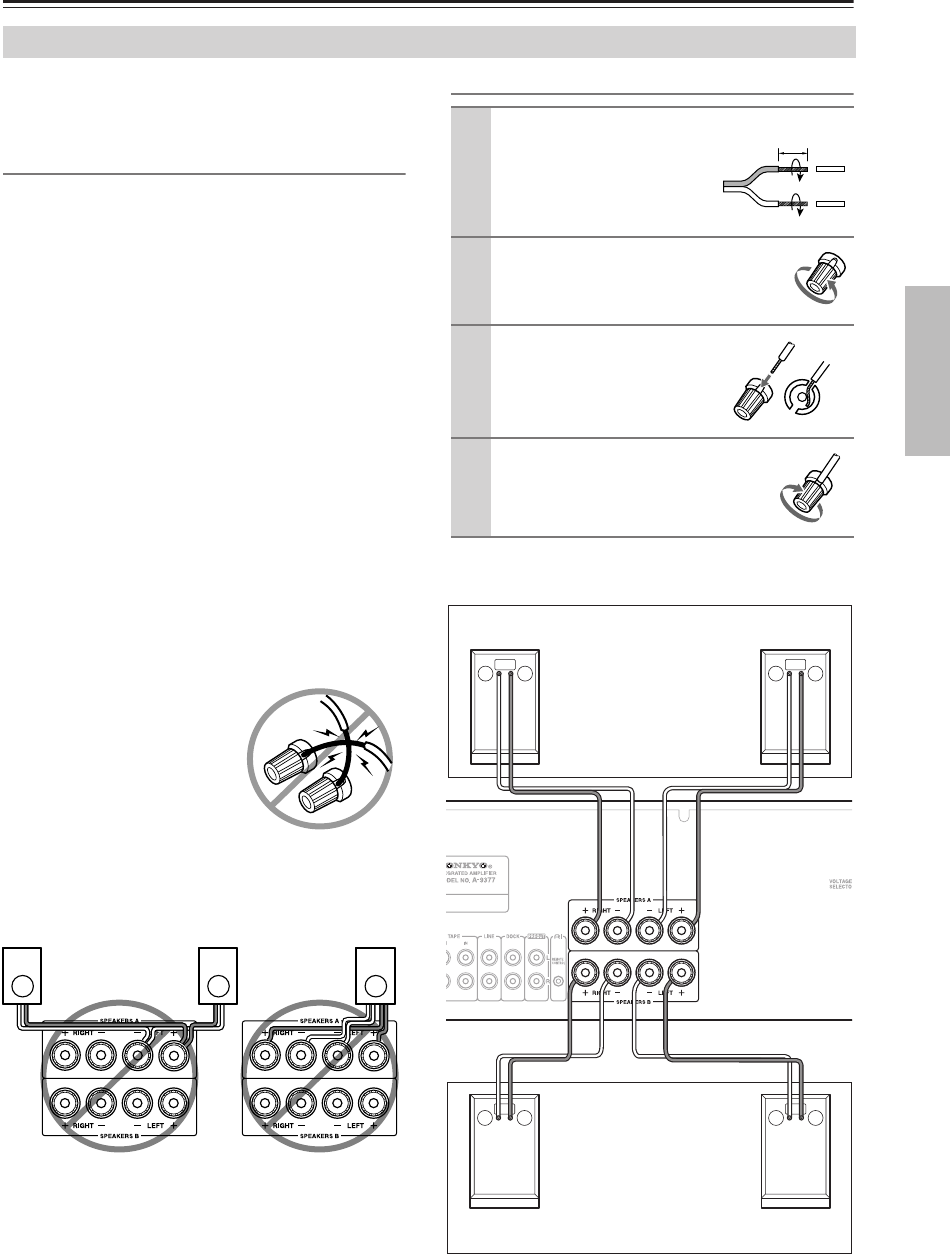
11
Connections
You can connect one or two sets of speakers (A/B) to
the A-9377 and select which set outputs sound, or use
both sets simultaneously.
Speaker Connection Precautions
•Always connect speakers in pairs.
• If you want to output sound from speaker sets A and B
simultaneously, you must use speakers with an imped-
ance of 8 to 16 ohms. If you connect speakers with a
lower impedance, and use the A-9377 at high volume
levels for a long period, the built-in protection circuit
may be activated.
• If your speakers have an impedance of 4 to 8 ohms,
connect them to either the SPEAKERS A or SPEAK-
ERS B terminals, or do not output sound from both
speaker sets simultaneously.
• Disconnect the power cord from the wall outlet before
making any connections.
• Read the instructions supplied with your speakers.
•Pay close attention to speaker wiring polarity. In other
words, connect positive (+) terminals only to positive
(+) terminals, and negative (–) terminals only to nega-
tive (–) terminals. If you get them the wrong way
around, the sound will be out of phase and will sound
unnatural.
• Unnecessarily long or very thin speaker cables may
affect the sound quality and should be avoided.
• Be careful not to short the
positive and negative wires.
Make sure also the wires do
not touch the rear panel.
Doing so may damage the
A-9377.
• Do not connect more than one
cable to each speaker terminal. Doing so may damage
the A-9377.
• Do not connect a speaker to more than one pair of
speaker terminals.
Connecting the Speaker Cables
The following illustration shows which speaker should
be connected to each pair of terminals.
Connecting Your Speakers
1
Strip about 15 mm (5/8 in.)
of insulation from the
ends of the speaker
cables, and twist the bare
wires tightly, as shown.
2
Unscrew the terminal.
3
Fully insert the bare
wires.
4
Screw the terminal tight.
15 mm
(5/8")
+–
+– +–
+–
A-9377
Speaker set A
Left
speaker
Right
speaker
Speaker set B
Left
speaker
Right
speaker


















